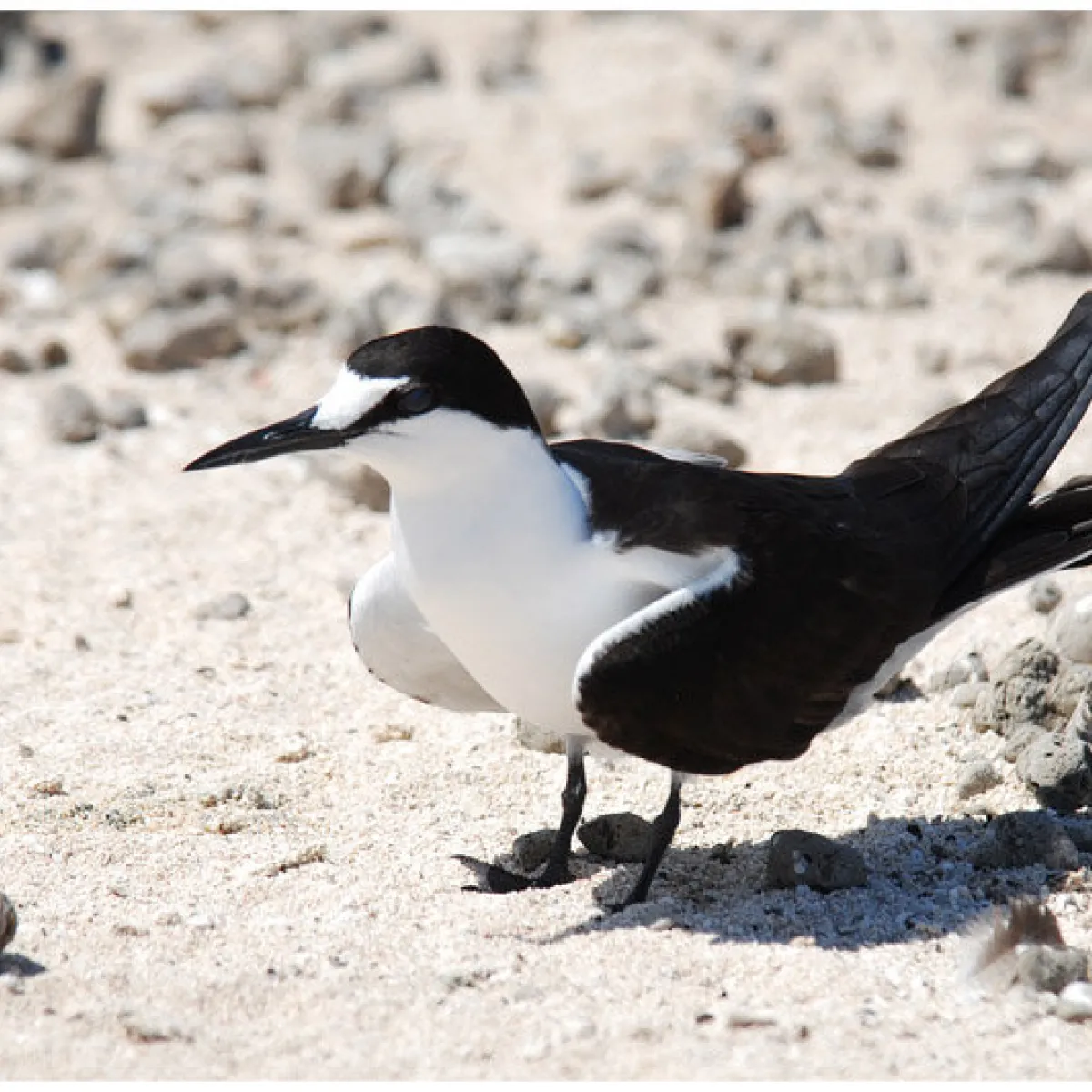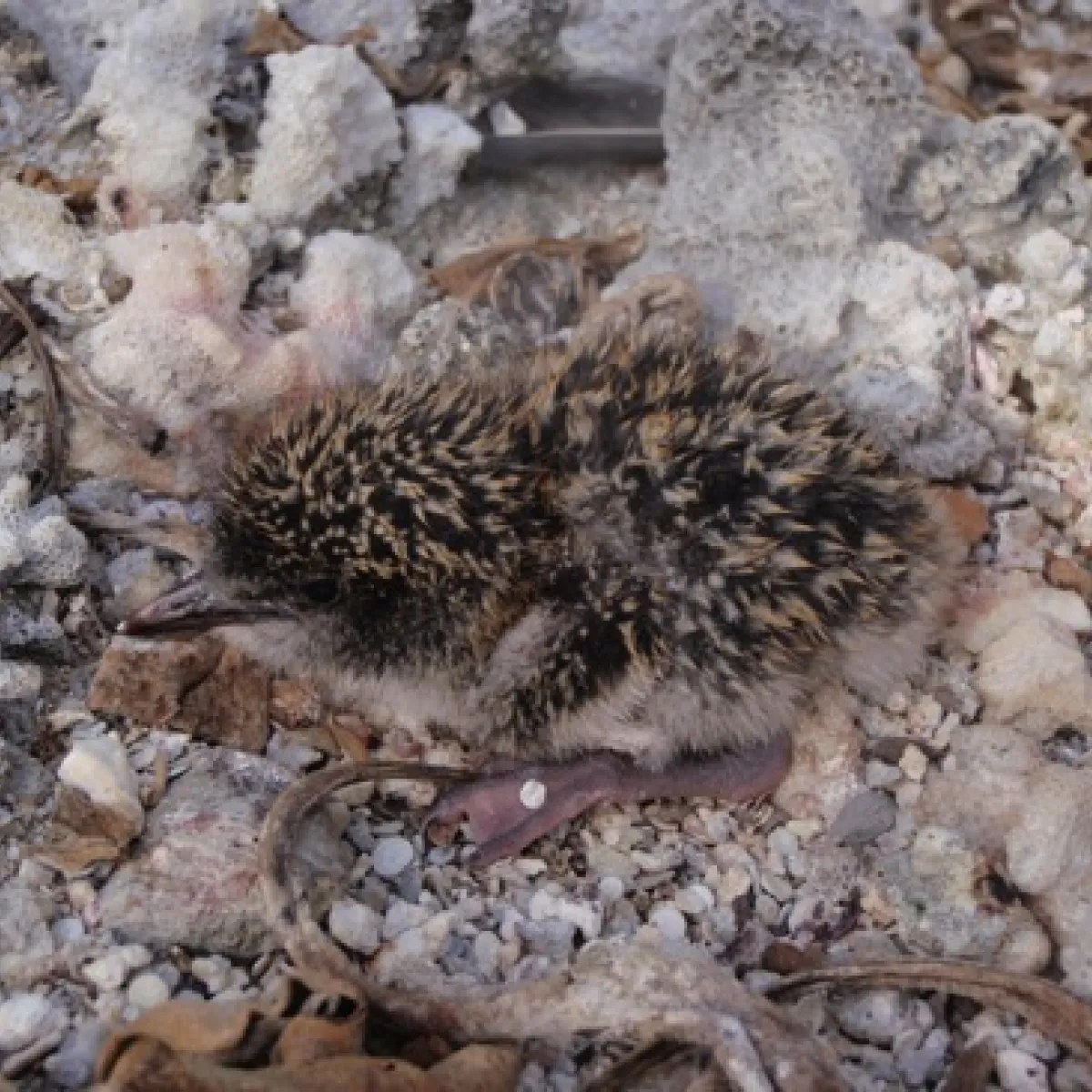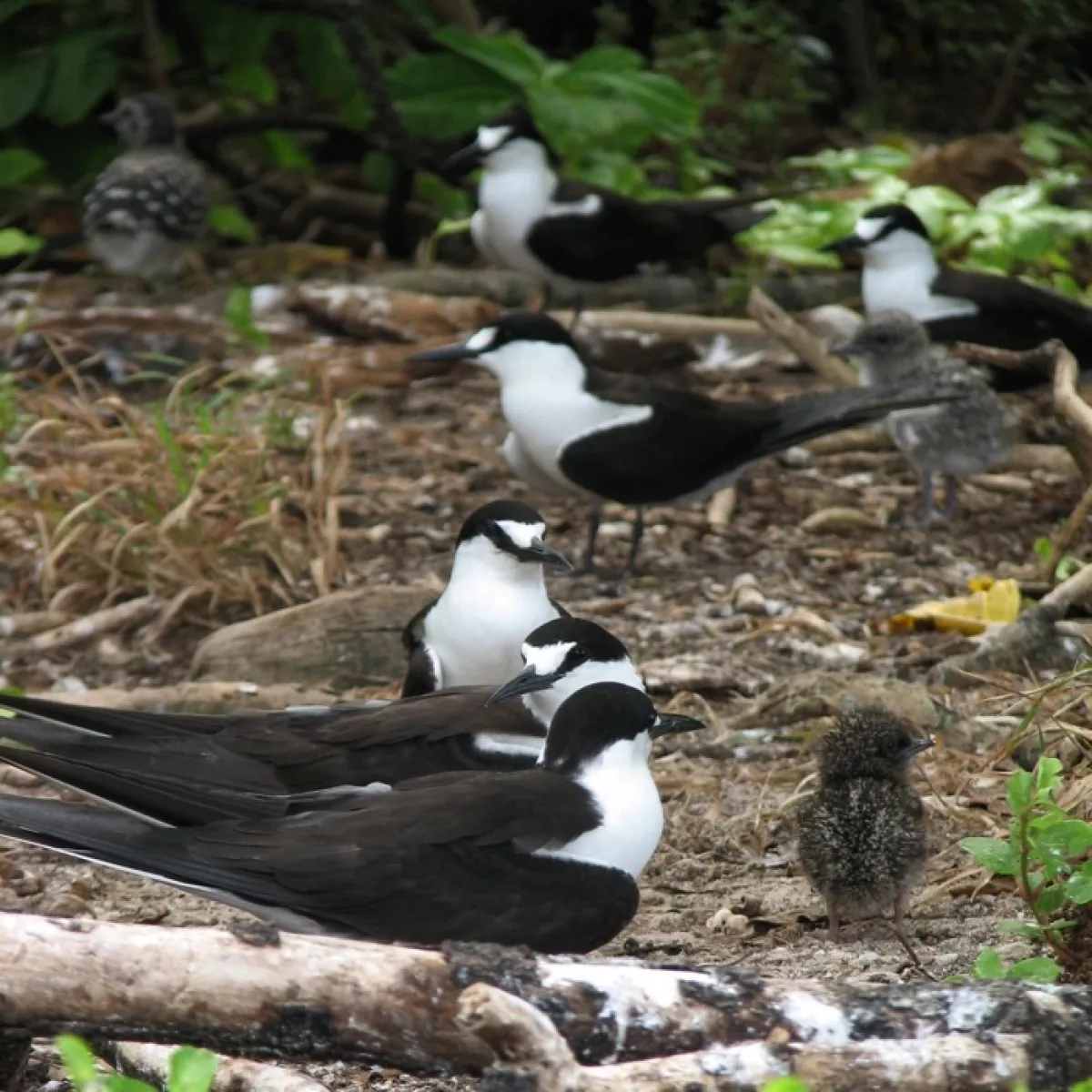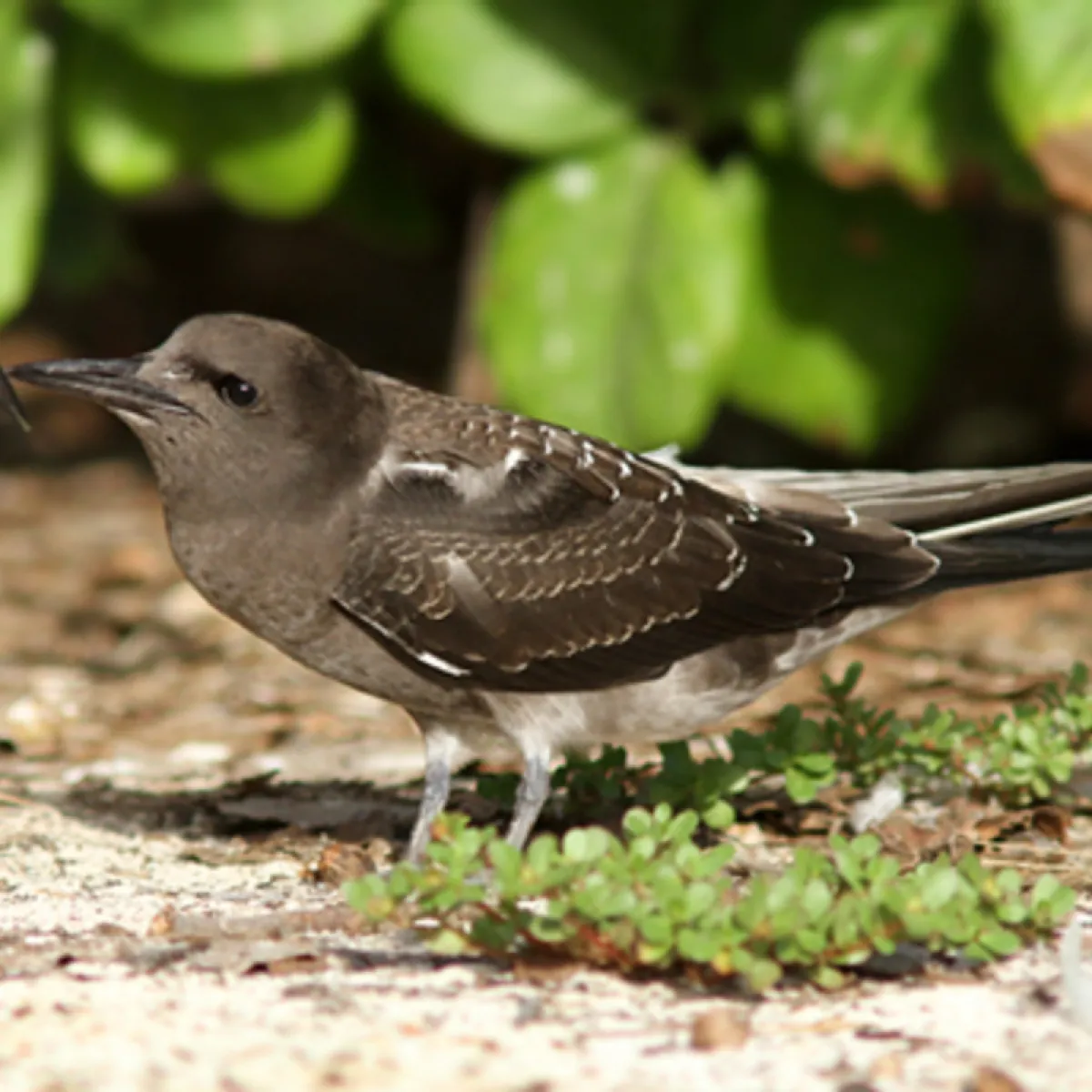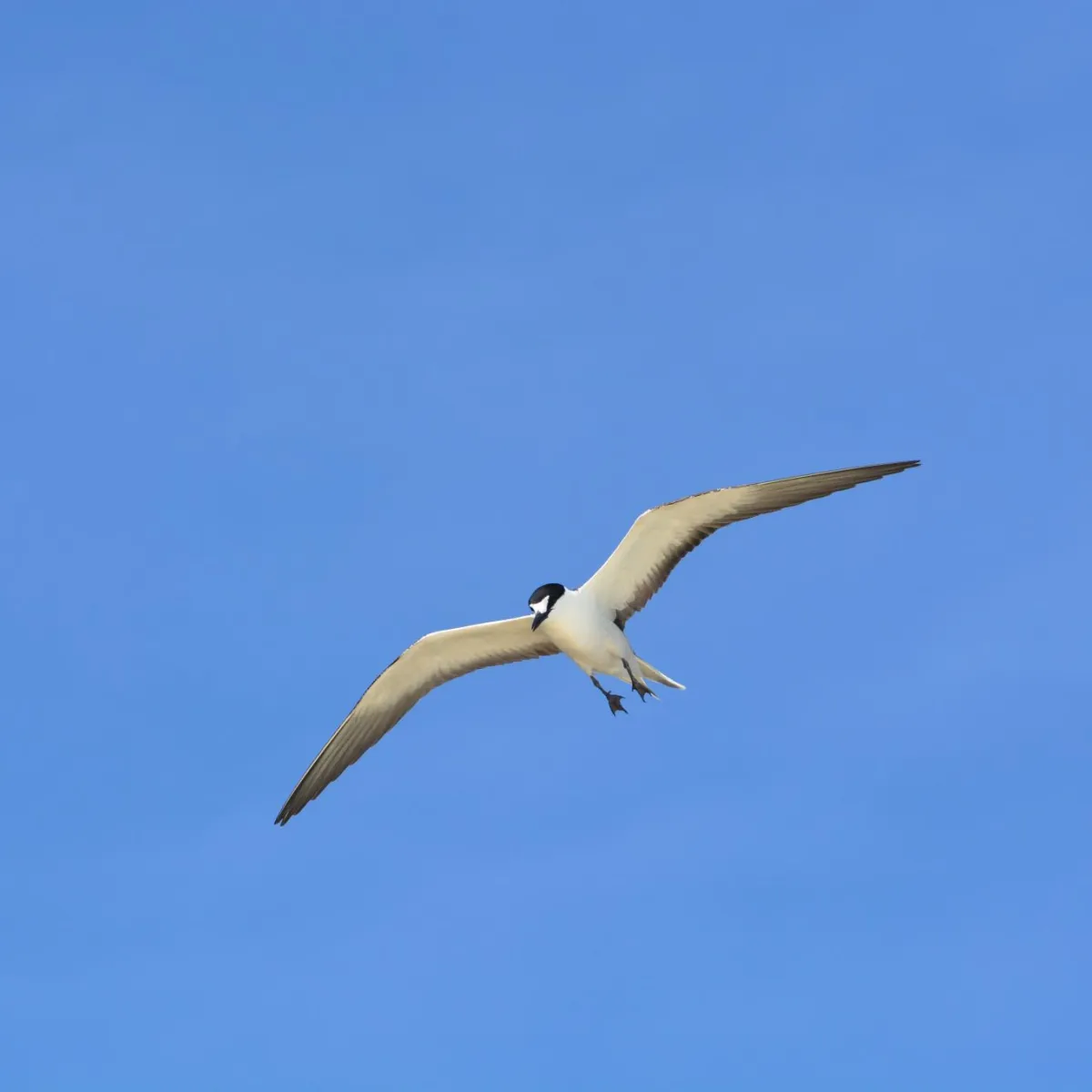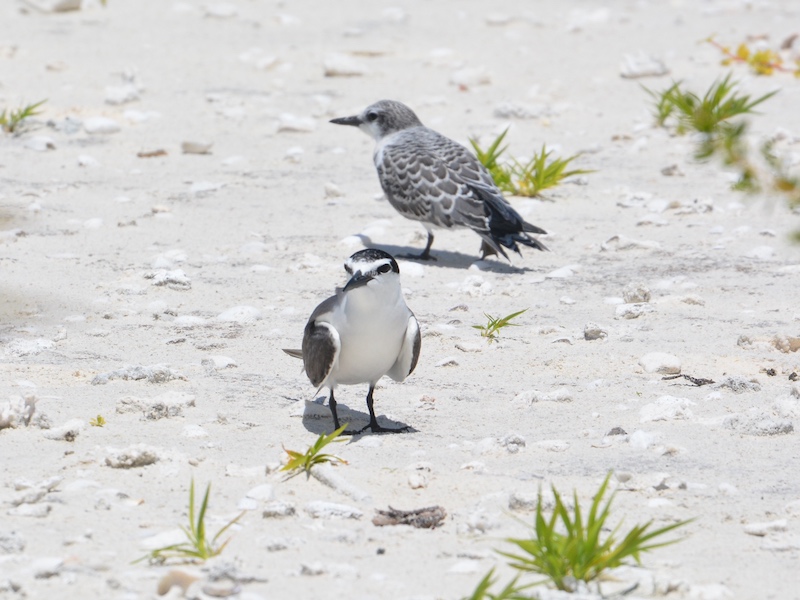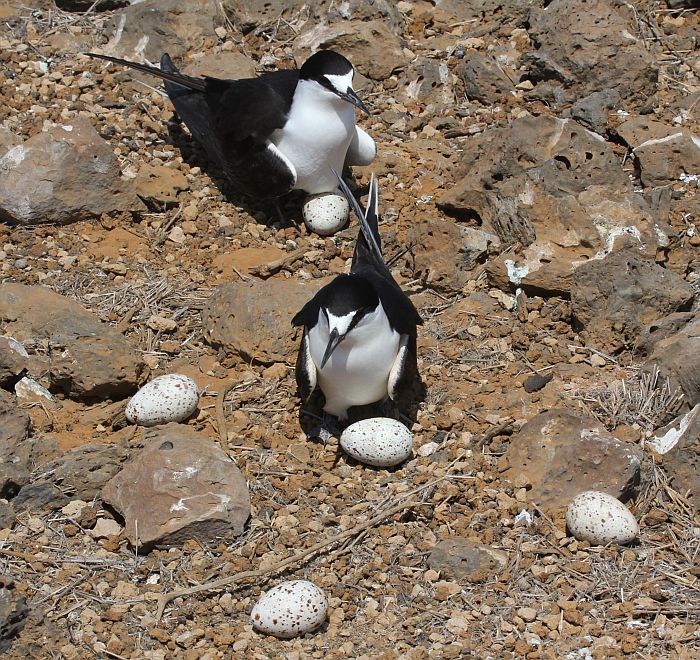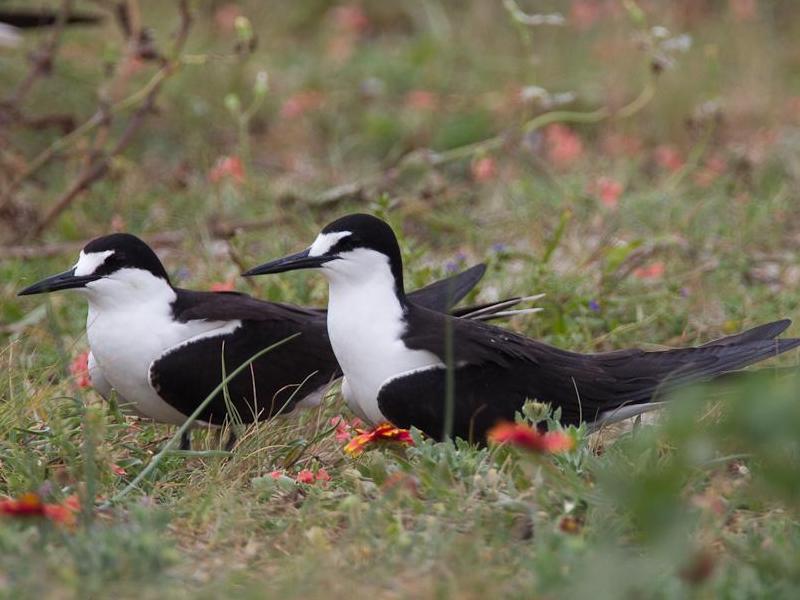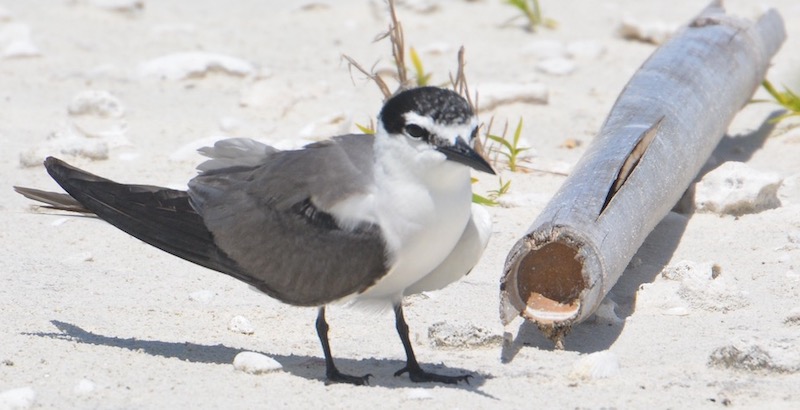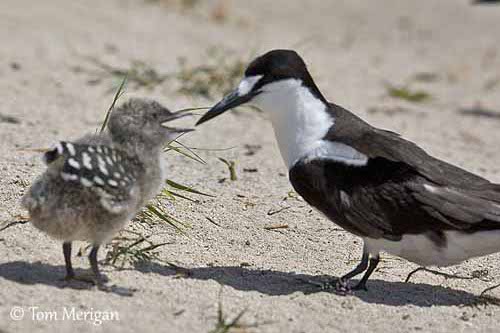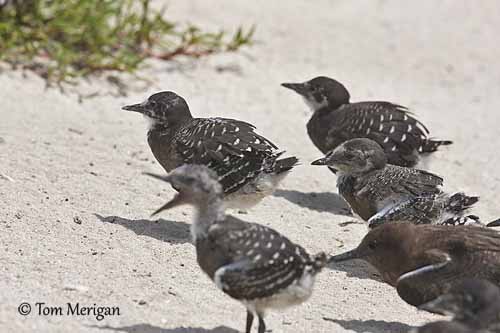Both male and female birds are identical with the top of the body and wings coal black and a white “V” on their forehead. Their underparts are white and legs and beak are black. In flight their wings are tapered and they have a long forked tail.

Sooty Tern
Sterne fuligineuse
‘Ave’a, Kaveka
The Sooty Tern is a black bird with a white underside. It has a black lines on either side of the head that extend from the top of the head, over eye, to the beak like a mask. It has a deeply forked tail with a wingspan of 86 to 94 cm. These birds fly long distances, up to 1,100 km away from land, to catch crustaceans, small fish, and cephalopods. They do not dive under the water to fish and instead scoop prey out of the surface of the water. The Sooty Tern returns to land only to nest. They reproduce year-round and lay a single 5.3 by 3.6 cm, light pink egg with purple and brown spots directly into a shallow depression dug in the sands of only the motu Tahuna iti. Both parents incubate the egg for about 29 days and raise the fledgling on the ground for 70 days. In 2014 there were between 20 and 50 couples estimated in Tetiaroa.

